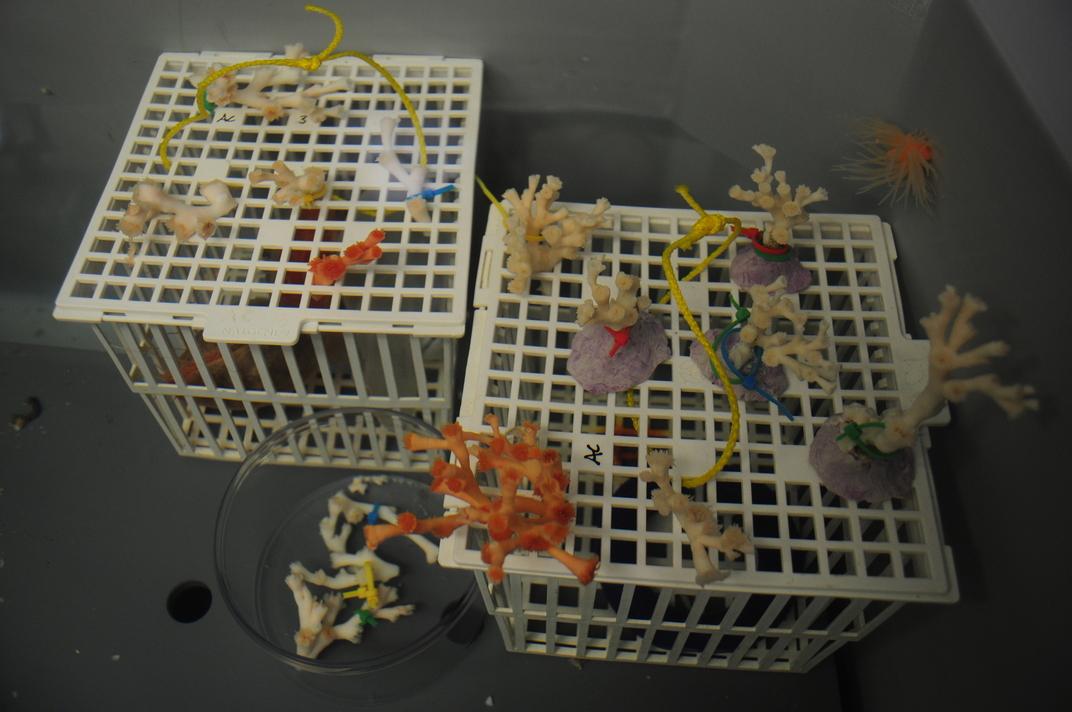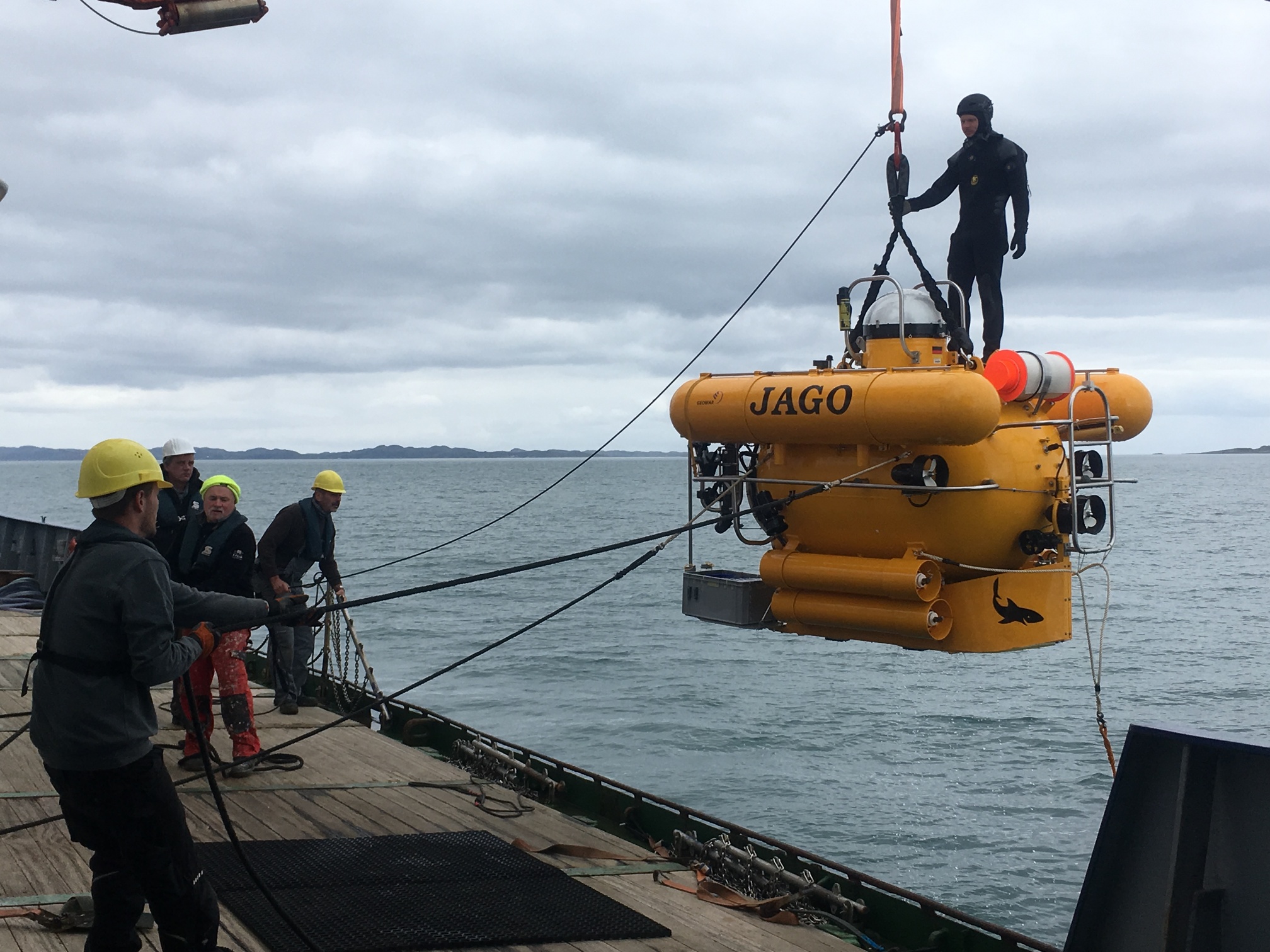From July 04 to July 20, 2018
MISSION NORVEGE 2018 – ATLANTIQUE
General context
Led by Janina Bucher of Germany’s GEOMAR Institute, the mission is being carried out in collaboration with the Centre Scientifique de Monaco (CSM), the Royal Netherlands Institute for Sea Research (NIOZ), the Norwegian Institute of Marine Research (IMR), the University of Florida’s Marine Science Laboratory and the University of Frankfurt (Institut für Geowissenschaften Goethe-Universität).
The overall scientific objective is to measure the physiological state of different cold-water coral reef populations, with a focus on the species Lophelia pertusa, to assess the natural variability of physiological processes (metabolism, growth, reproduction) and to compare these field data with laboratory experimental results.
The Jago submersible is used to take water and coral samples at depths of between 200 and 300 meters from four different reefs in coastal regions and off the Norwegian fjords.
Location
coral reef Norway -300 meters
Coral reef Norway
Collaboration with the Centre Scientifique de Monaco
Doctors Christine Ferrier-Pages and Stéphanie Reynaud from the Centre Scientifique de Monaco (CSM) have been working for several years on the ecophysiology of deep-water corals in the Mediterranean.
They were therefore asked to contribute their expertise on deep-water corals and to collect samples from a different geographical area.
Magali Boussion, the team’s laboratory technician at the time, carried out the field operations.

Ecophysiology team objectives
- Collect corals for analysis of lipids, proteins and sugars in their tissues.
- Perform on-board incubations in glass chambers to estimate the corals’ carbon budget.
- Feed different colonies with marked prey to study their nutrition.
All these samples will subsequently be analyzed in the CSM laboratories.
Life at -300 metres? Corals in Norway?
Unknown to many, there are coral reefs teeming with life in cold waters and deep zones.
Such is the case in Norway, where numerous animal species can be found.
In this video you’ll see a sample of the animal life found in the 300-metre deep zone off the Norwegian town of Throndheim.
View of Norway’s coral reefs through the camera of the submersible Jago ©JAGO_GEOMAR_POS525
Corals studied
Lophelia pertusa, a magnificent white/pink coral with branches, can live at depths ranging from 80 meters to over 3,000 meters, but most often at depths of 200 to 1,000 meters where light no longer reaches.
Another frequently encountered species is Madrepora Oculata, a pinkish-orange color with a distinctive zigzag skeleton.
These two species have a calcareous skeleton and are called scleractinians.
So how do these species survive, and what are their physiological characteristics?
These were the scientists’ questions.
Lophelia pertusa
Madrepora oculata
bivalve Acesta excavata
Coral species and bivalves studied during the mission ©Magali Boussion Explorations de Monaco
coral reef Norway -300 meters
Sampling
During this mission, 4 sites were referenced and explored.
Two near the coast, two offshore, targeted in particular to study and compare the possible impact of coastal human pollution.
Cutting-edge technologies for exploration
Corals are collected using the GEOMAR Institute’s Jago submersible, which can reach depths of 400 meters.
An arm located at the front of the submersible allows corals to be gently picked up from a basket attached to the submersible.
All dives are filmed in high definition with cameras attached to the submersible, and the images are subsequently analyzed by scientists.
For water sampling, a rosette is deployed several times a day by the Poseidon close to the reefs under study.
Operation of the Jago arm and coral collection during a dive aboard the Jago ©Jago GEOMAR
About GEOMAR
GEOMAR Helmholtz (Centre for Ocean Research Kiel) is a world-renowned marine research institute.
It studies the chemical, physical, biological and geological processes of the seabed, oceans and ocean margins, and their interactions with the atmosphere.
GEOMAR is a public institution funded jointly by the German federal government (90%) and the state government of Schleswig-Holstein (10%).
GEOMAR employs around 1,000 people (2018).
The RV Poseidon
Built in 1976, the Poseidon belongs to the pool of German research vessels.
It has a wet laboratory, two dry laboratories, and equipment for deploying oceanographic tools such as the Jago submarine and a bathysonde.
The vessel, named after the Greek god of the seas, is mainly deployed in the North Atlantic and Mediterranean.
A crew of some fifteen people is responsible for its operation, and provides logistical support to scientists during their on-board missions.
RV POSEIDON ©M.Boussionn Explorations de Monaco
The Jago submarine
The Jago is a manned exploration submersible.
It moves autonomously underwater and is not connected by an umbilical cable to the support vessel.
Two large hemispherical portholes give the pilot and an observer excellent views of the seabed and immediate environment.
The relatively light weight (3 tonnes) and compact dimensions allow worldwide operations from a wide variety of support vessels.
The Jago is currently the only manned research submersible in Germany.
It has been stationed at the Helmholtz Centre for Ocean Research (GEOMAR) since 2006.
The participants
- Janina Büscher (Research Fellow, Project Manager), GEOMAR (Kiel, Germany)
- Karen Hissmann (engineer, JAGO, coordination), GEOMAR (Kiel, Germany)
- Jürgen Schauer (driver, JAGO), GEOMAR (Kiel, Germany)
- Peter Striewski (co-pilot, JAGO), GEOMAR (Kiel, Germany)
- Lina Holthusen (master student), GEOMAR (Kiel, Germany)
- Øystein Gjelsvik (doctoral student), IMR (Bergen, Norway)
- Narimane Dorey (post-doc), IMR (Bergen, Norway)
- Sandra Maier (doctoral student) NIOZ (Texel, Netherlands)
- Sandra Brooke (Research Associate), Florida State University Coastal and Marine Laboratory (St. Teresa, Florida, USA)
- Nico Schleinkofer (doctoral student), Institut für Geowissenschaften Goethe-Universität (Frankfurt)
- Magali Boussion (laboratory technician), CSM (Monaco)
A human adventure
A 20-day scientific mission on an oceanographic vessel in the Norwegian fjords is first and foremost a human adventure rich in sharing and emotions.
Photo gallery
Launching the Jago ©Jago team POS525
Deep sea vacuum image Norway ©Jago images
Puffin, view from Norway ©S.Jamme
Puffin ©S.Jamme
Landscapes of Norway ©S.Jamme
Sperm whale tail ©S.Jamme
Arrival in Bergen ©M.Boussion Explorations de Monaco
View of the RV Poseidon bridge©M.Boussion Explorations de Monaco
island of departure, Poseidon offshore ©M.Boussion Explorations de Monaco
Nudibranch Norway ©M.Boussion Explorations de Monaco
Midnight Sun ©M.Boussion Explorations de Monaco
RV Poseidon arrival©M.Boussion Explorations de Monaco
Norway sponge ©M.Boussion Explorations de Monaco

